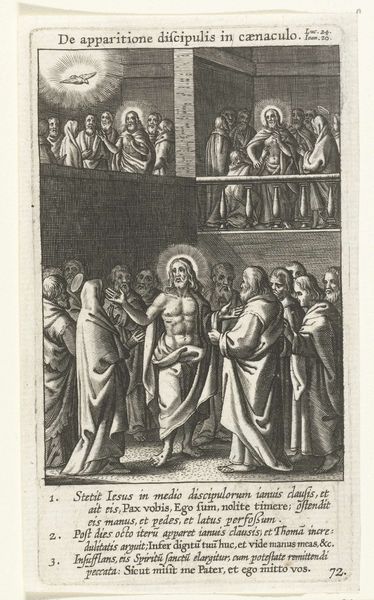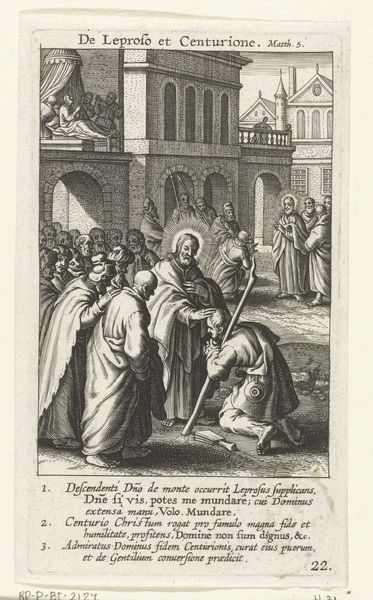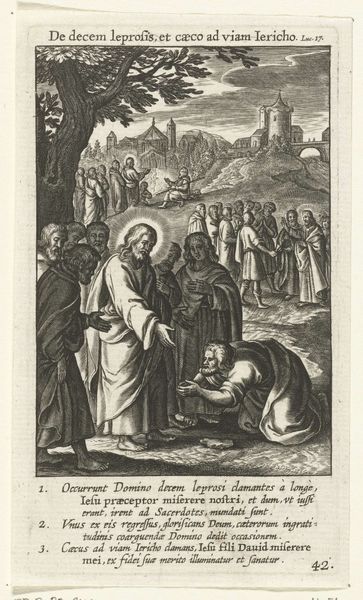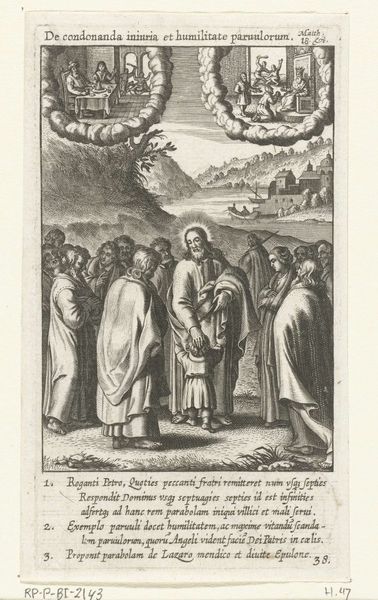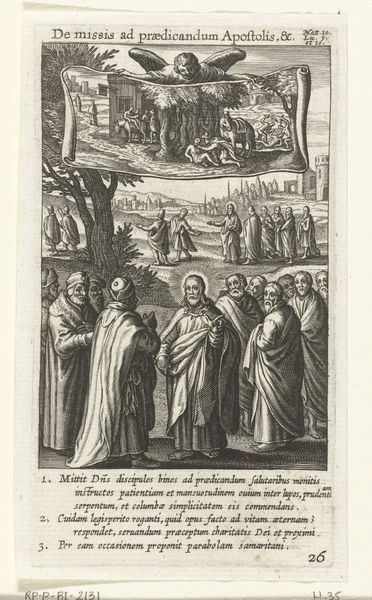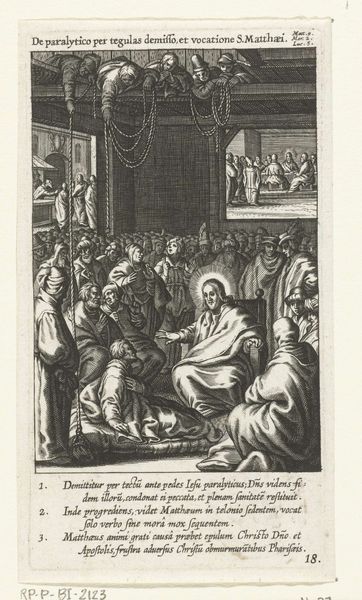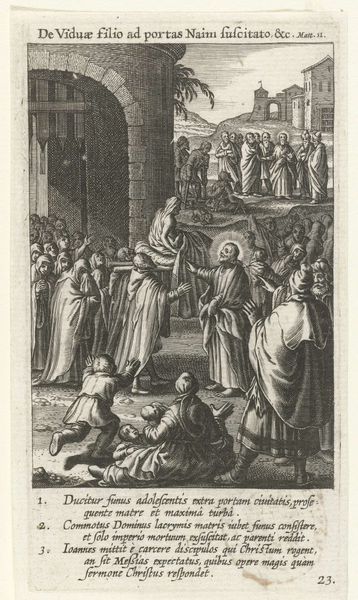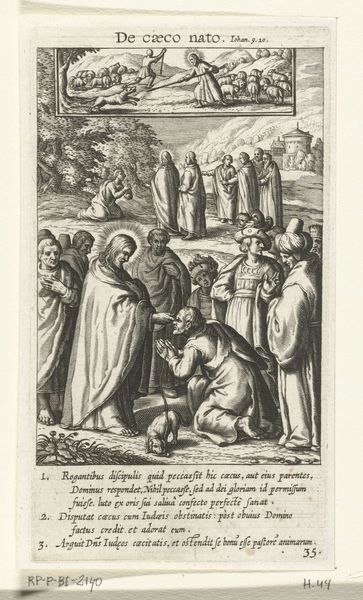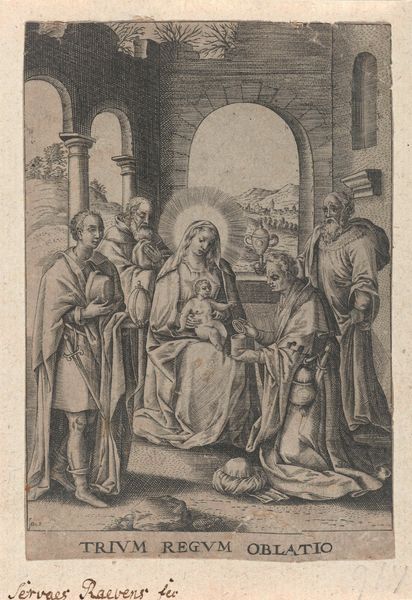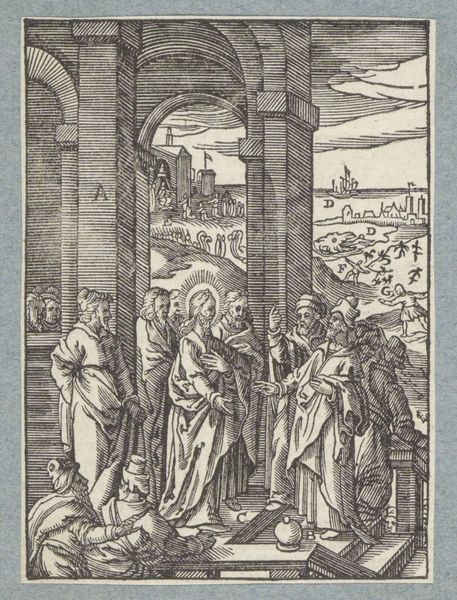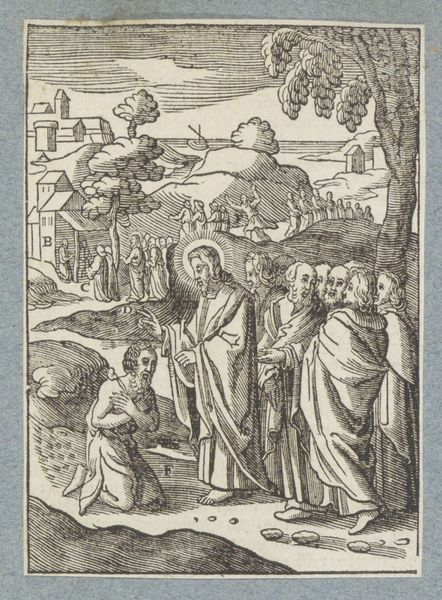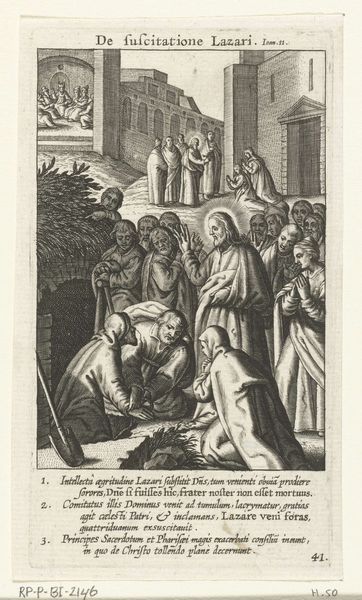
Christus geneest de dochter van een vrouw uit Kanaän 1590 - 1622
0:00
0:00
print, engraving
#
narrative-art
#
baroque
# print
#
old engraving style
#
traditional media
#
figuration
#
personal sketchbook
#
line
#
history-painting
#
engraving
Dimensions: height 133 mm, width 74 mm
Copyright: Rijks Museum: Open Domain
Curator: Editor: So, here we have "Christus geneest de dochter van een vrouw uit Kanaän," created by Boëtius Adamsz. Bolswert between 1590 and 1622. It’s an engraving, and what strikes me immediately is how much is happening within a single frame, the whole scene feels alive! How do you read the composition of this work? Curator: Indeed, the composition is quite dynamic. Notice how the artist has used distinct groupings of figures to convey separate moments of the narrative, unified by a complex web of linear patterns. See how each supplicant gesture contributes to the balance. What do you make of the use of line and light in delineating the figures? Editor: I notice the contrast; the use of hatching creates darker and more defined areas to contrast with areas using thinner lines to add details to faces and clothing, suggesting folds. It is how they define figures that draws the eye through the print, but sometimes the lack of a wide value range can be distracting because figures can feel cluttered together. What I find interesting is the architecture of the scene, any thoughts on the building at right? Curator: Yes, the building at right introduces another layer, offering a visual stage for the sick daughter while juxtaposing interior and exterior spaces. I see a fascinating duality in how the architecture reinforces the narrative but its stark lines differ with organic landscapes; what does this say about how Bolswert interpreted these spaces? Editor: Well, it highlights that sense of separation between the spaces. Almost as though one scene were a performance acted out in public, while another is experienced alone. Overall I feel like the complexity of lines can be a bit much, it’s fascinating but requires close inspection. Curator: I agree; the intricate details demand close observation, inviting the viewer to decode the multiple layers of visual information presented. But such engagement ultimately rewards us with a deeper understanding of the artist's formal strategies. Editor: I learned to see the balance he was creating to unify a chaotic scene. Curator: Exactly! It's in those structured formal choices that the engraving finds its enduring power.
Comments
No comments
Be the first to comment and join the conversation on the ultimate creative platform.
